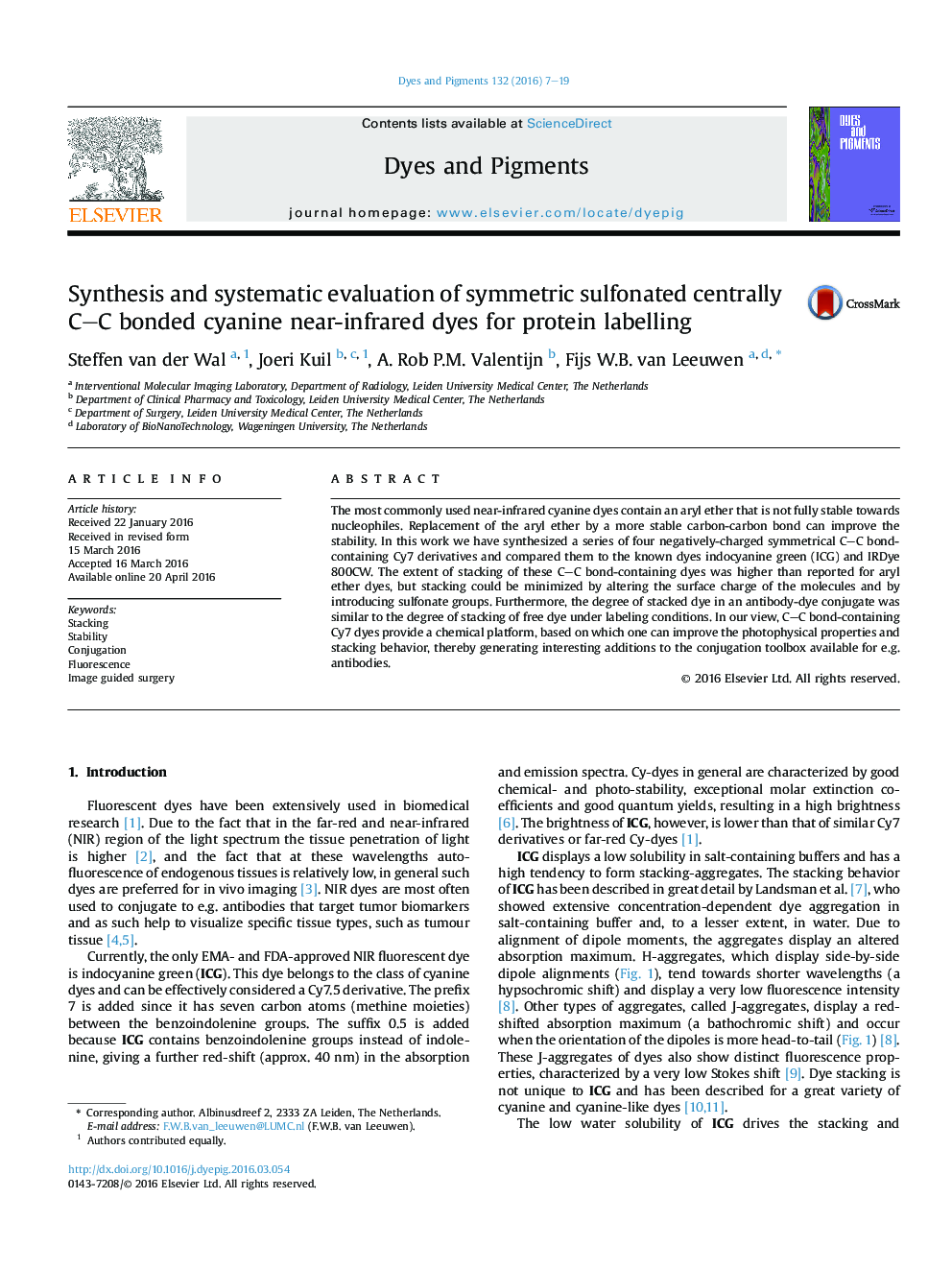| Article ID | Journal | Published Year | Pages | File Type |
|---|---|---|---|---|
| 175313 | Dyes and Pigments | 2016 | 13 Pages |
•CC bonded cyanine dyes display stacking in H2O, which is decreased via sulfonation.•Stacking of the free dyes in solution seems predictive for stacking on conjugates.•CC bonded NIR cyanine dyes are chemically stable towards thiols and amines.
The most commonly used near-infrared cyanine dyes contain an aryl ether that is not fully stable towards nucleophiles. Replacement of the aryl ether by a more stable carbon-carbon bond can improve the stability. In this work we have synthesized a series of four negatively-charged symmetrical CC bond-containing Cy7 derivatives and compared them to the known dyes indocyanine green (ICG) and IRDye 800CW. The extent of stacking of these CC bond-containing dyes was higher than reported for aryl ether dyes, but stacking could be minimized by altering the surface charge of the molecules and by introducing sulfonate groups. Furthermore, the degree of stacked dye in an antibody-dye conjugate was similar to the degree of stacking of free dye under labeling conditions. In our view, CC bond-containing Cy7 dyes provide a chemical platform, based on which one can improve the photophysical properties and stacking behavior, thereby generating interesting additions to the conjugation toolbox available for e.g. antibodies.
Graphical abstractFigure optionsDownload full-size imageDownload as PowerPoint slide
